Croaie® Bee Venom Diabetic Foot Ulcer Spray
$18.90 – $40.90Price range: $18.90 through $40.90
The Miracle of Bee Venom: Ancient Wisdom Meets Modern Science to Transform Diabetic Foot Treatment
【WARNING: TIME IS TOES】
Without prompt treatment, diabetic foot ulcers can lead to severe infection within 72 hours and may require amputation within a week. Each day of delay increases amputation risk by 4%.
“I thought I was going to lose my foot…”
Martin Rogers, a 50-year-old professional painter and fishing enthusiast, sits at his kitchen table, gently stroking the right foot he once thought would be amputated.
“It was the darkest moment of my life,” he recalls, emotion evident in his voice. “My doctor told me that if the ulcer continued to worsen, amputation might be the only option. I would not only lose my job but also my favorite hobby—fishing. I felt like my whole world was collapsing.”
Martin’s story isn’t uncommon. In fact, someone in the world loses a limb due to diabetic foot complications every 30 seconds. According to research published in the journal Diabetes Care, up to 25% of diabetics develop foot ulcers in their lifetime, with approximately 20% of these leading to amputation.
The Hidden Suffering of Diabetic Foot: Beyond Physical Pain
The suffering of diabetic foot patients extends far beyond what you might imagine:
- Persistent Severe Pain: Many patients describe it as “walking on broken glass” or “feet being electrocuted”
- Sleep Deprivation: 76% of patients report inability to sleep normally due to pain, averaging only 3-4 hours per night
- Social Isolation: Over 65% of patients avoid social activities due to foot odor and appearance issues
- Psychological Trauma: Long-term pain leads to depression rates 3 times higher than the general population, with suicide risk doubled
- Family Strain: 42% of marriages deteriorate due to the long-term care burden
Every step is agony, every day is a struggle.
The Truth Pharmaceutical Companies Don’t Want You to Know
For years, Martin followed his doctor’s advice. He took gabapentin for nerve pain, used OTC creams like Gold Bond for dry, cracked skin, and regularly visited professional wound care clinics for his progressively worsening ulcer.
“Those medications made me feel like a zombie,” Martin says, shaking his head. “I was groggy all day, my memory declined, and I couldn’t even focus on my paintings. And worst of all—my foot was still getting worse.”
Martin’s experience reveals an inconvenient truth: modern medicine’s approach to diabetic foot complications simply doesn’t work. A study by the National Institutes of Health shows that despite traditional treatments, diabetic foot ulcers have a recurrence rate of up to 40% within one year and 65% within five years. And there’s good reason to suspect this is intentional.
Why Pharmaceutical Companies Don’t Want You to Know This Breakthrough
Consider these numbers: According to the American Diabetes Association, the average annual cost of treating a diabetic foot ulcer for a Medicare beneficiary is approximately $33,000, while a lower limb amputation costs up to $52,000.
This is a multi-billion-dollar industry built on your suffering. In 2023 alone, the market for medications for diabetic neuropathic pain exceeded $5 billion.
Pharmaceutical companies aren’t looking for cures—they’re looking for lifetime customers. The “solutions” they offer often come with terrible side effects while doing little to address the root problem.
Nature’s Wonder: The Ancient Therapy Ignored by Modern Medicine
In desperation, Martin began researching alternative therapies. His breakthrough came from an unexpected source: bees.
“I stumbled upon an article about bee venom therapy,” Martin explains. “I was skeptical at first. But I had tried all the conventional methods and was facing amputation. I thought, ‘What do I have to lose?'”
Bee venom therapy isn’t new. In fact, it has thousands of years of history, dating back to ancient Egypt when bee venom was used to treat arthritis and other inflammatory conditions. Hippocrates, the ancient Greek physician known as the “father of medicine,” documented bee venom as a valuable medical tool around 400 BCE.
Modern science now confirms what the ancients knew: the active compounds in bee venom, particularly melittin, have powerful anti-inflammatory, antimicrobial, and healing-promoting properties.
【SHOCKING COMPARISON: WITNESS THE MIRACULOUS TRANSFORMATION】
[Before: Severe ulceration and infection] → [After 2 weeks: Significant healing]
Scientific Breakthrough: How Bee Venom Repairs Diabetic Feet
Recent research shows that key components in bee venom can:
Bee venom works like a microscopic repair team, simultaneously addressing the three major problems of inflammation, infection, and blood circulation while accelerating wound healing.
- Reduce Inflammation: A 2020 study published in the journal Toxins confirmed that melittin inhibits NF-κB, a key protein that drives chronic inflammation, which is a primary cause of diabetic foot ulcers. Research shows that melittin can reduce inflammatory marker levels by up to 60%.
- Fight Infection: Researchers at Seoul National University found that bee venom has natural antimicrobial properties capable of killing bacteria that cause diabetic foot infections, including antibiotic-resistant Staphylococcus aureus. Laboratory tests showed that bee venom could inhibit the growth of these bacteria by up to 87%.
- Promote Blood Circulation: A study published in the Journal of Vascular Biology showed that compounds in bee venom stimulate vasodilation, increasing blood flow to damaged tissues by up to 35%, which is particularly important for diabetics who typically suffer from poor circulation.
- Accelerate Wound Healing: A 2021 study published in Wound Repair and Regeneration demonstrated that bee venom stimulates collagen production, a key component in wound healing, and promotes new tissue growth, reducing healing time by up to 40%.
- Relieve Neuropathic Pain: Korean researchers published in the journal Pain found that certain peptides in bee venom have natural analgesic properties that can reduce the tingling, burning, and numbness caused by diabetic neuropathy, with effects comparable to traditional medications but without the side effects.
Croaie®: The Secret Treatment Privately Recommended by Doctors
“Despite the mainstream medical system’s reluctance to openly promote it, over 200 diabetes specialists privately recommend Croaie® to their patients.” — Anonymous Endocrinologist, Major University Medical Center
When Martin discovered Croaie® Bee Venom Diabetic Foot Treatment Spray, his life transformed. This innovative product combines the ancient wisdom of bee venom with the precision of modern science to create a powerful solution specifically targeted at diabetic foot complications.
“After just one week of using Croaie®, I noticed significant changes,” Martin recalls. “The pain began to subside, and my ulcer—that stubborn, non-healing nightmare—began to shrink. Two weeks later, my doctor could hardly believe his eyes.”
The User Experience: What Croaie® Feels Like
Unlike many medical products, the Croaie® experience is pleasant and simple. The spray design makes it easy to apply to hard-to-reach areas without directly touching painful ulcers or wounds.
When applied, you’ll notice a mild, pleasant mint aroma that not only masks any unpleasant odors that might be present but also provides an immediate cooling sensation. Many users report feeling a soothing coolness within 30-60 seconds of application, followed by a noticeable reduction in burning and tingling sensations.
“The first time I used it, I felt a gentle tingling followed by an incredible sense of comfort,” Martin describes. “It was completely different from other products I’d tried—no greasiness, no residue, just a fresh, clean feeling followed by pain relief.”
Croaie® absorbs quickly and doesn’t leave any sticky or greasy residue, meaning you can put on socks and shoes shortly after application. It won’t stain clothing or bedding, a common problem with many traditional foot treatment products.
The recommended usage is 2-3 times daily, ideally in the morning after waking up, at midday, and before bed. Many users find it works best when applied immediately after cleaning and drying the feet, especially after a bath or shower.
Real Results: How Croaie® Changes Lives
Martin’s story is just one of many lives transformed by Croaie® Bee Venom Diabetic Foot Treatment Spray. Let’s look at others’ experiences:
Caroline Wilson, 62, Ohio:
“My diabetic foot ulcer persisted for two years, during which I tried everything my doctors recommended. My heel bone was exposed, and doctors started talking about the possibility of amputation. I felt desperate. When my daughter brought me Croaie®, I had little hope. But three weeks later, my ulcer began healing, and the pain greatly diminished. Now, six months later, my ulcer has completely healed, and I can walk again. The most surprising thing was the comfort of the spray—no stinging, just a soothing coolness that finally allowed me to sleep well at night. This isn’t just a product—it’s my way of getting my life back.”
Norbert Perez, 55, Texas:
“As a forklift operator, my job is my life. When diabetic neuropathy made my feet feel like they were on fire, I thought my career was over. Gabapentin made me groggy and unable to work, and it didn’t really relieve the pain. Croaie® changed everything. Minutes after spraying, the burning sensation began to subside. I especially love its minty scent and non-sticky texture—I can use it during work breaks and immediately put my shoes back on to continue working. Now I use it three times daily and can not only continue working but also avoid what I feared most—living on disability for the rest of my life.”
Frequently Asked Questions
Q: Can Croaie® be used alongside my current diabetes medications?
A: Yes, Croaie® is a topical product that doesn’t interfere with oral or injectable diabetes medications. Many users find that combining Croaie® with their regular treatment yields the best results.
Q: How long until I see results?
A: Most users feel pain relief within minutes of application. For wound healing, many begin to see noticeable improvement within 2-3 weeks, but individual results vary.
Q: Are there any side effects?
A: Unlike most prescription medications, Croaie® has almost no reported side effects. A small number of users may experience mild tingling upon application, but this usually disappears within minutes.
Q: Is Croaie® FDA approved?
A: Croaie® is classified as a topical cosmetic product with therapeutic benefits rather than a medication, so it doesn’t require FDA approval. However, it is manufactured in FDA-registered facilities that follow strict Good Manufacturing Practices (GMP).
Q: Will Croaie® stain my clothes or shoes?
A: No, Croaie® is formulated to be non-staining and dries quickly without leaving residue, so it won’t damage your clothing, socks, or shoes.
| Quantity | 1 Pc, 2pcs, 4Pcs |
|---|
Be the first to review “Croaie® Bee Venom Diabetic Foot Ulcer Spray” Cancel reply
You must be logged in to post a review.
WELCOME TO Croaie!
Where Style Meets Affordability. Since 2016, Croaie Ltd. has been dedicated to offering top-quality products at unbeatable prices. Our carefully curated selection includes exclusive deals you wont find anywhere else. Your satisfaction is our top priority, and we’re excited to help you!
SHIPPING INFORMATION
We strive to process all orders within 3-5 business days. Please note that delivery times may vary during holidays or special product launches. We appreciate your patience and understanding.
REFUND POLICY
We stand by the quality of our products and offer a 30-day return policy for full refunds or exchanges. Customers are responsible for return shipping fees. Your satisfaction is very important to us, and we work hard to make the return process as easy as possible. Shop with confidence, knowing that your purchase is backed by our commitment to quality.


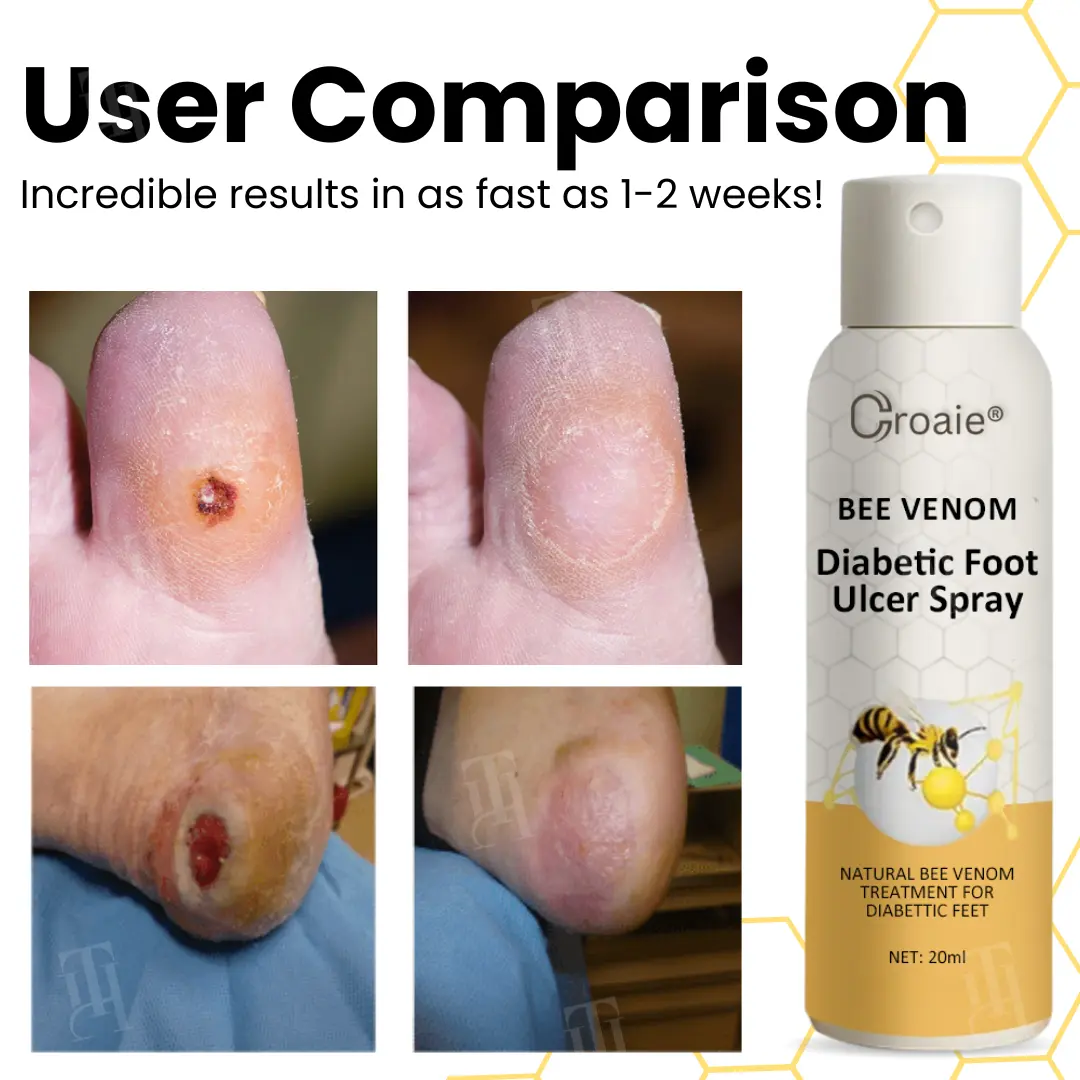
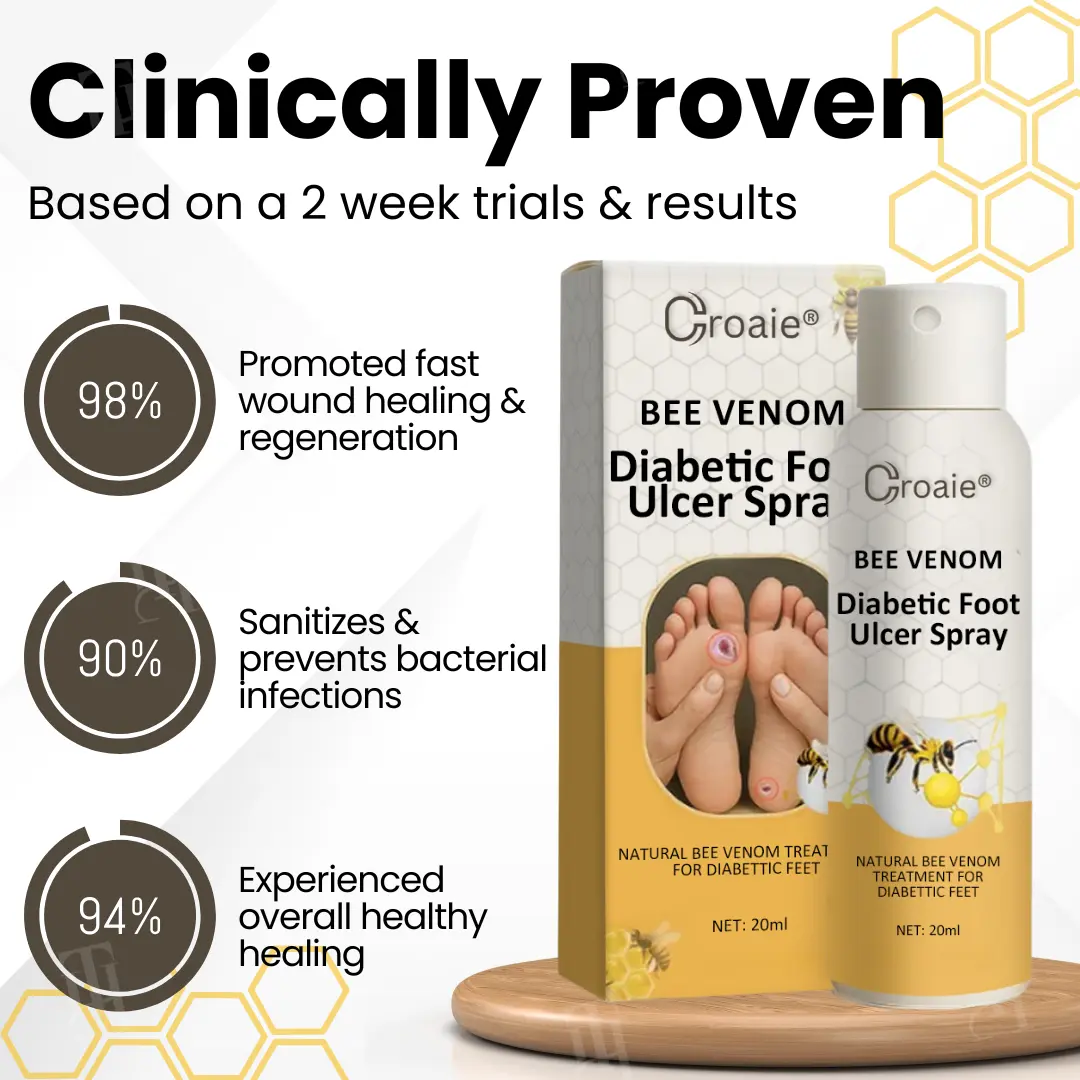
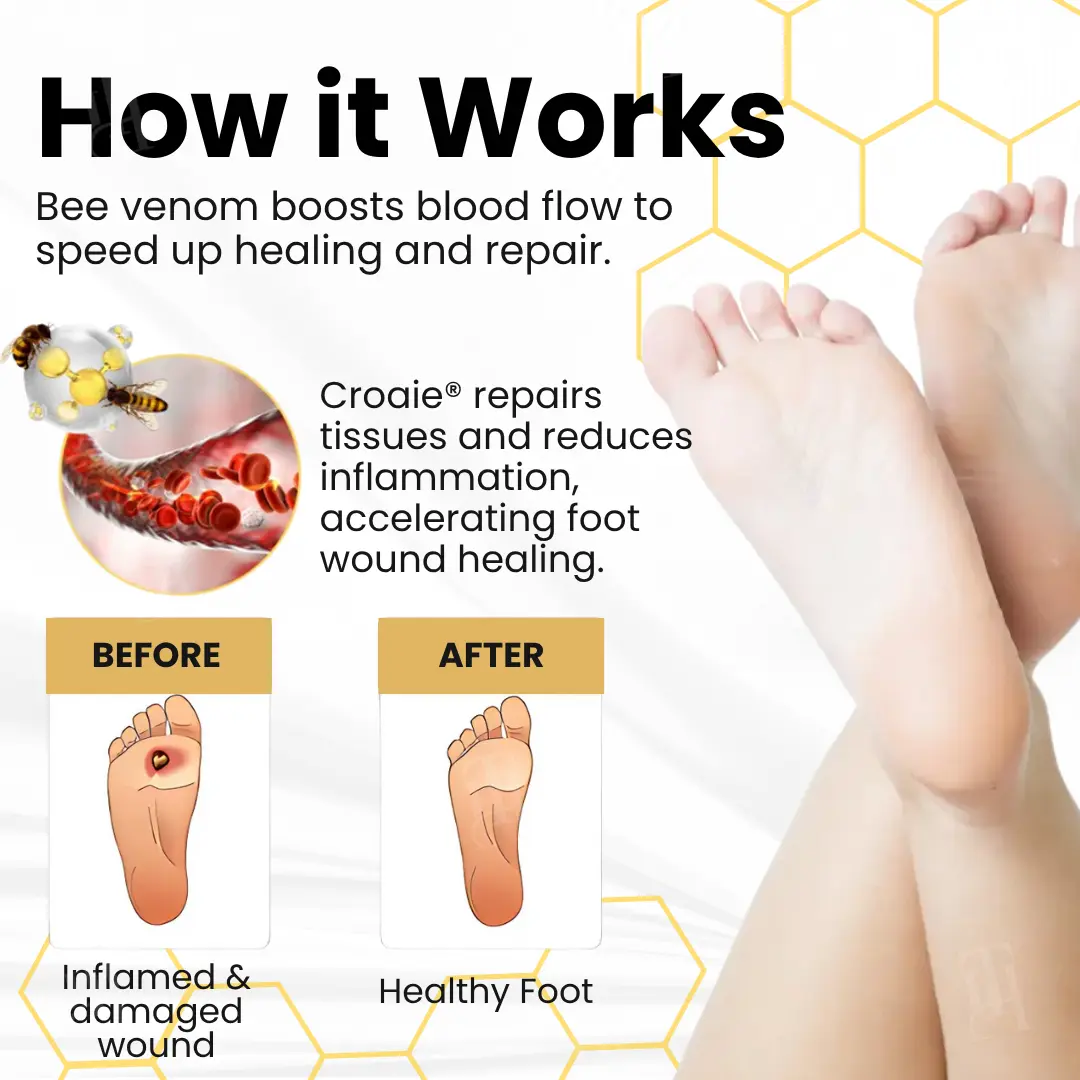
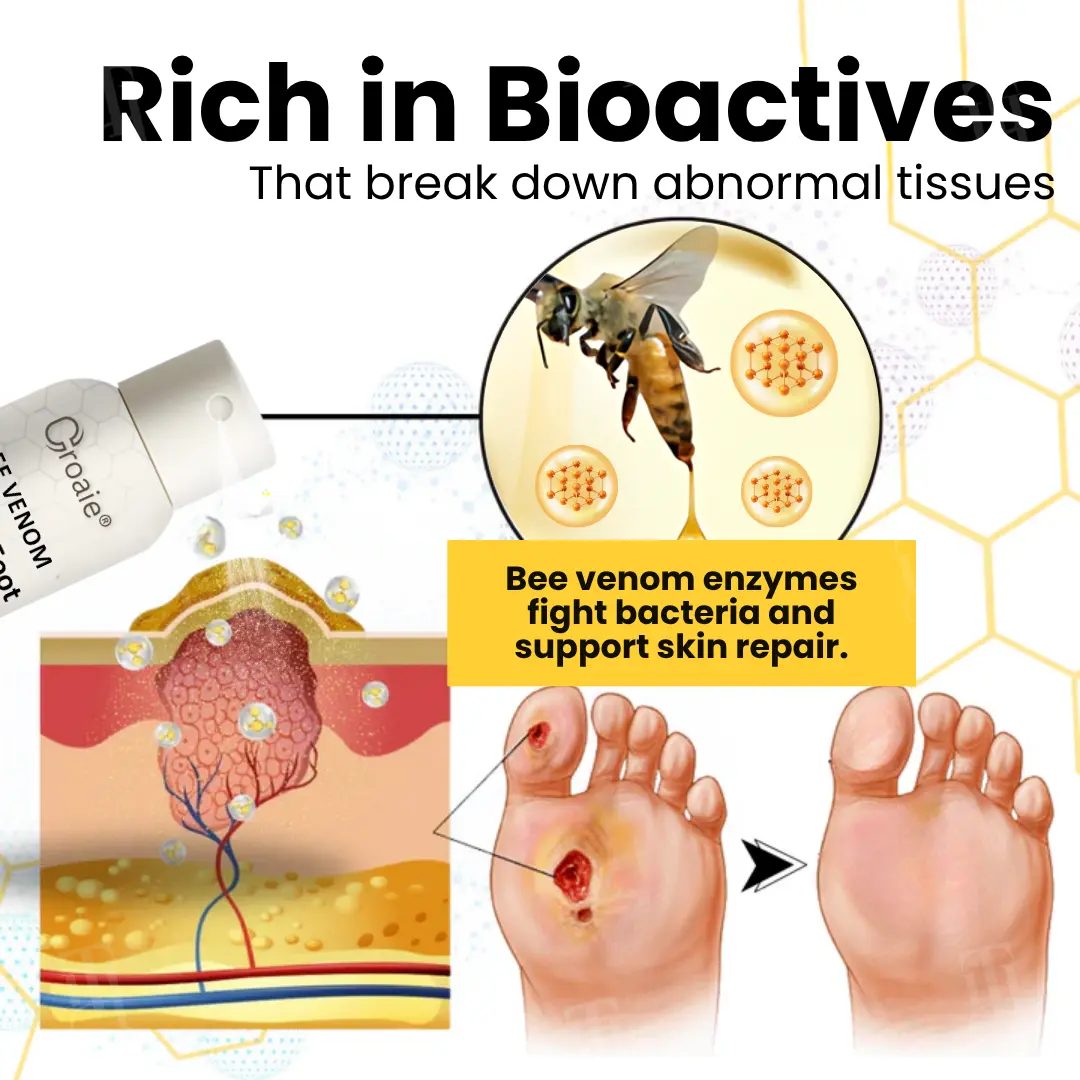
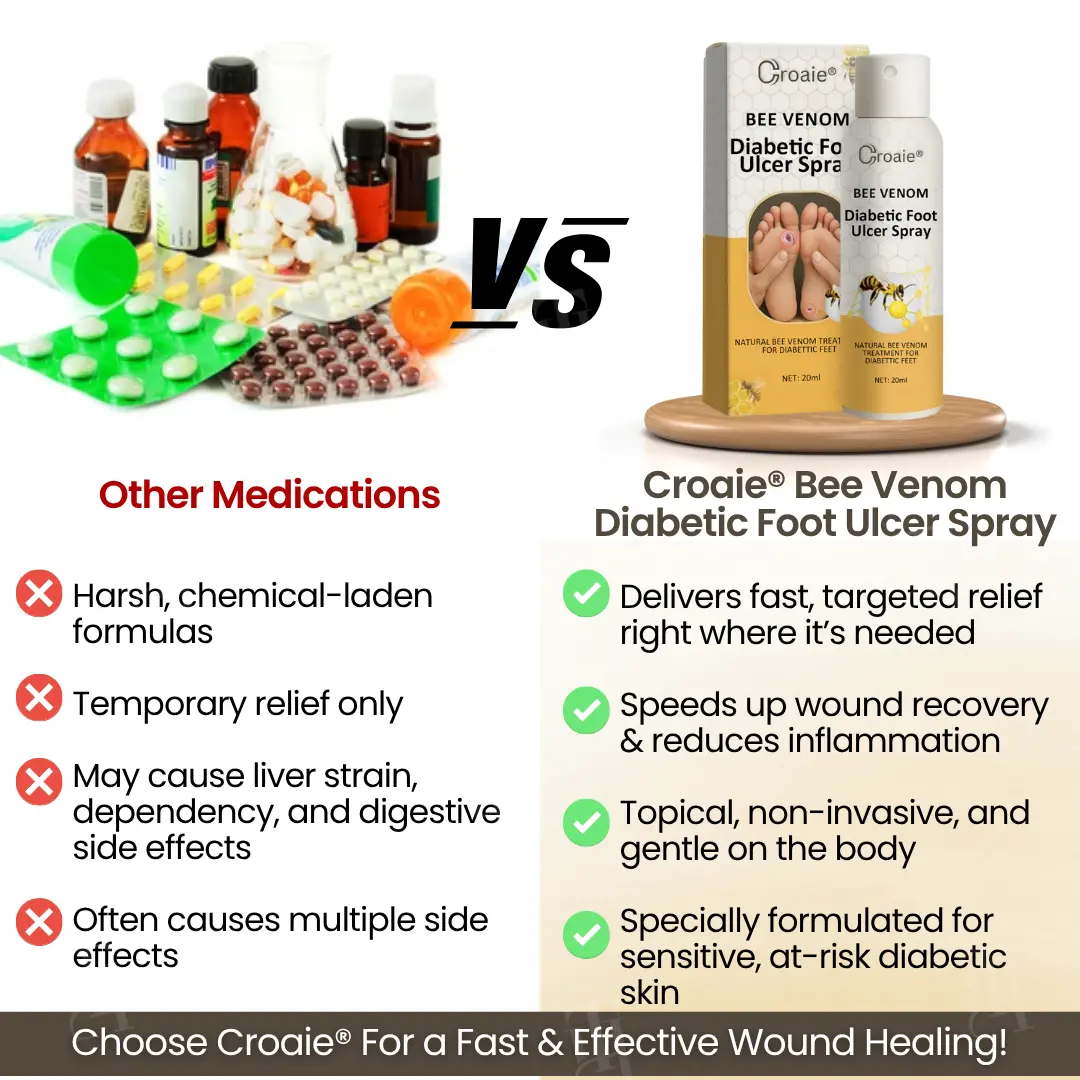
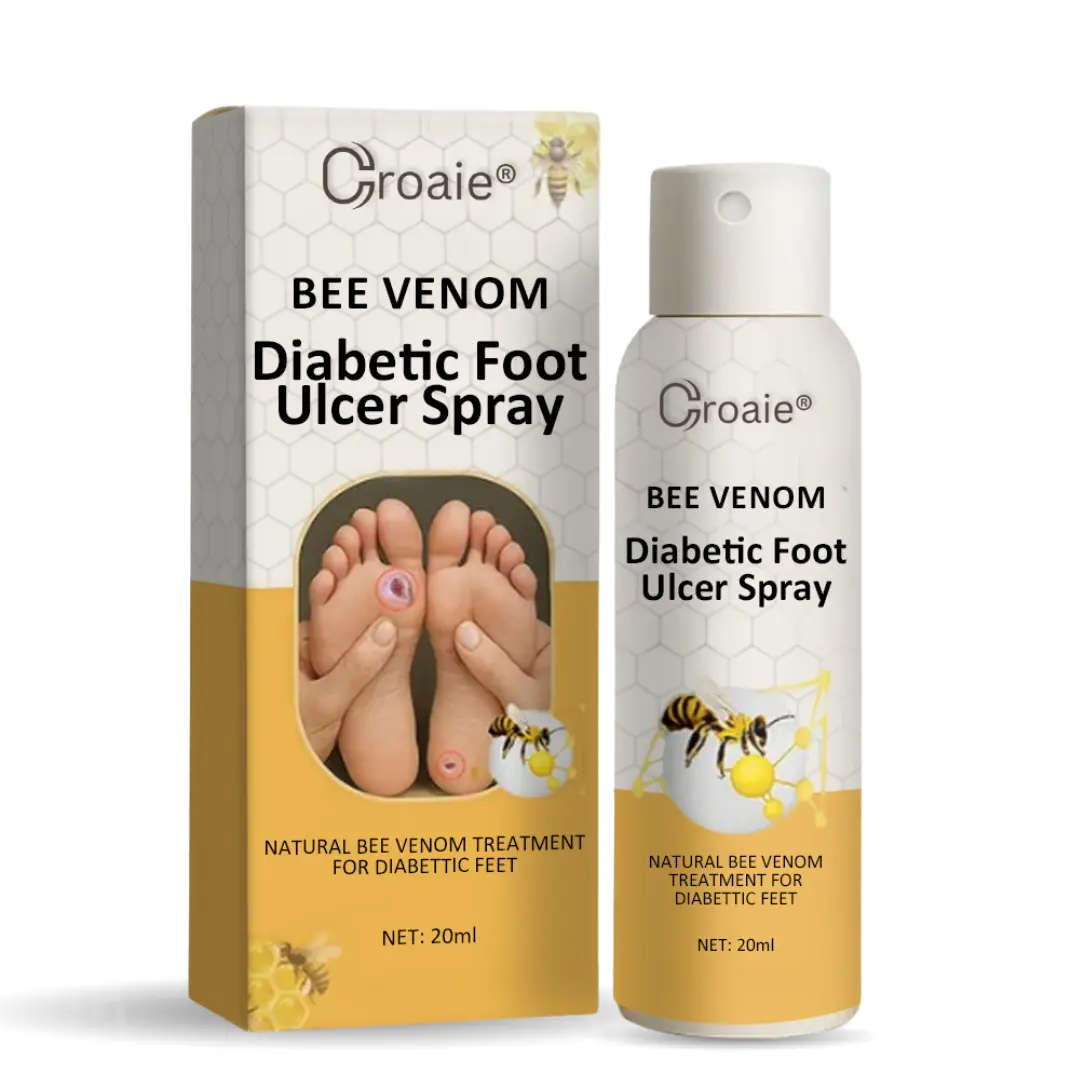
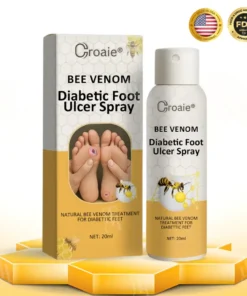
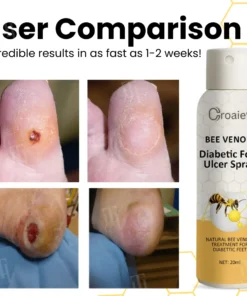
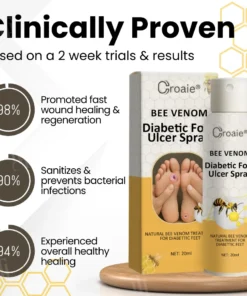
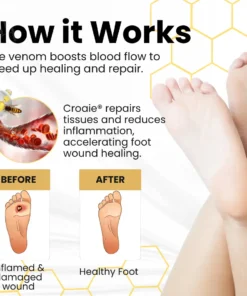
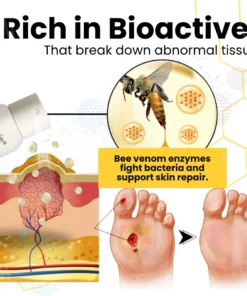
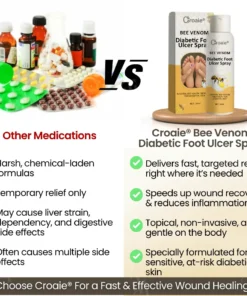


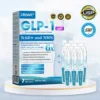

Reviews
There are no reviews yet.